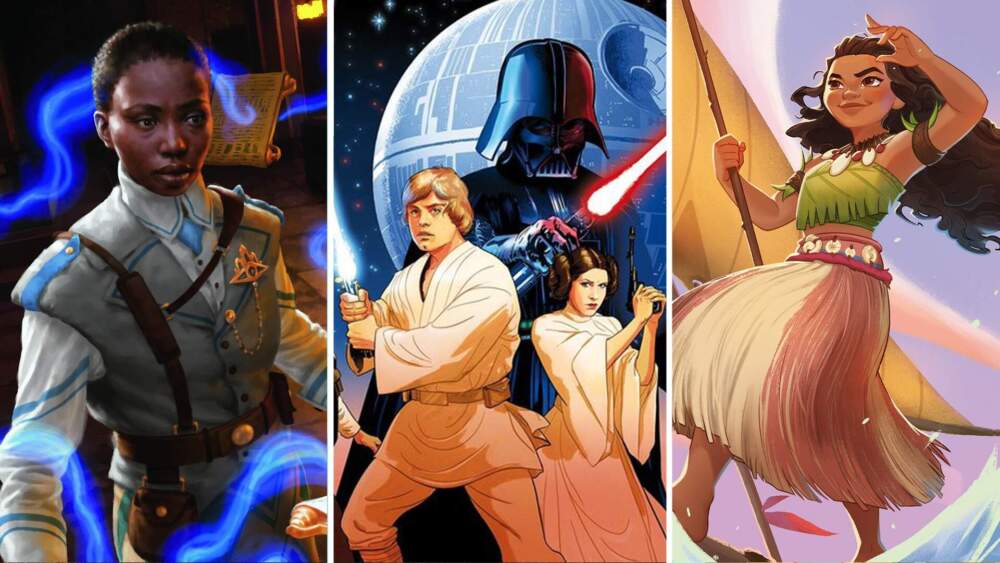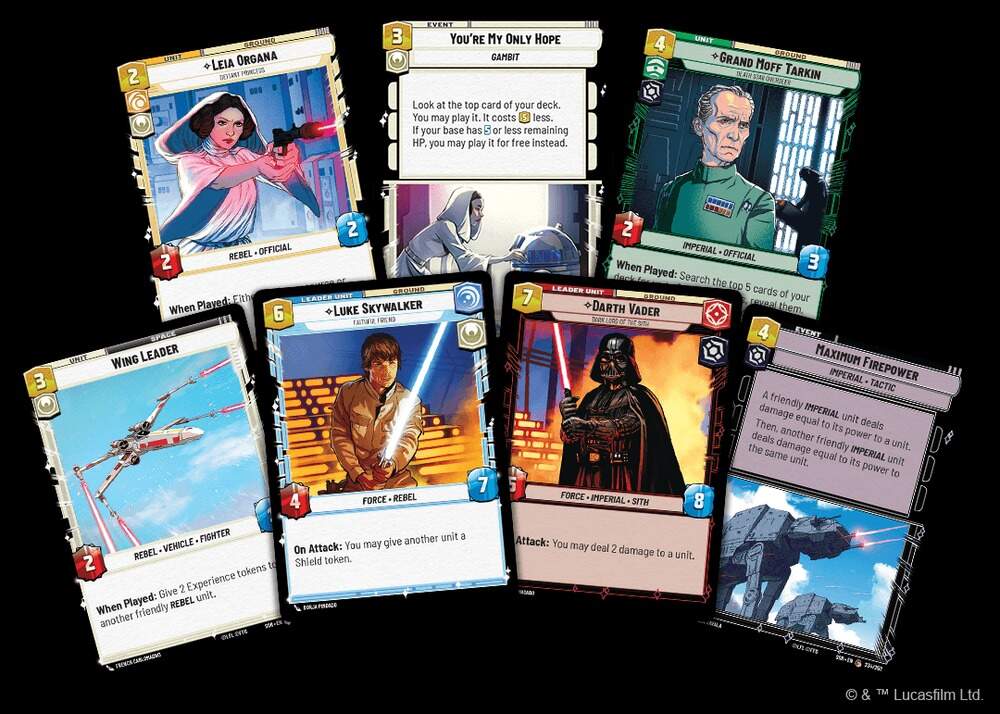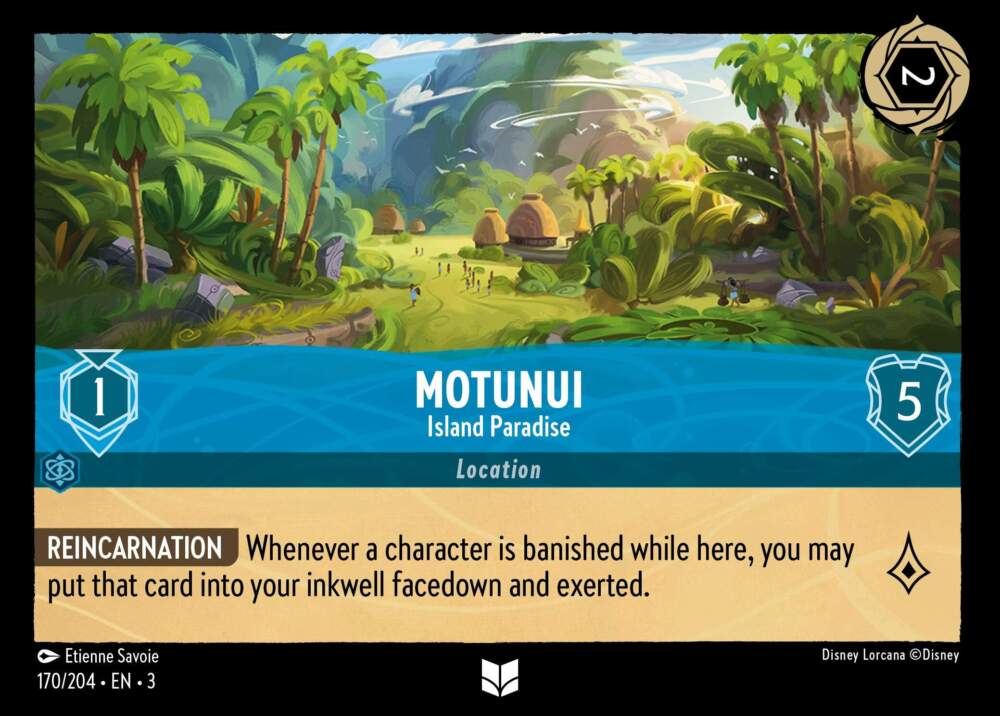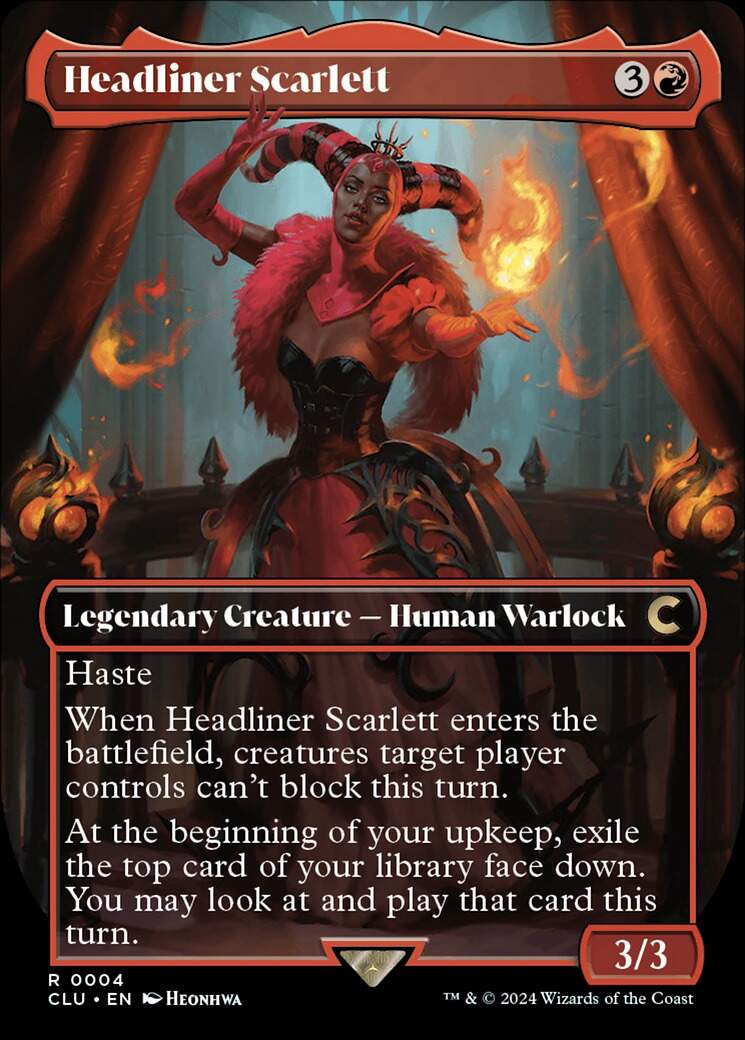Advertisement
'Star Wars: Unlimited': A bold challenger to 'Lorcana' and 'Magic' trading card games

“Star Wars: Unlimited” comes out Friday — it’s the latest attempt to bring the interstellar franchise to the crowded collectible card game arena.
The original “Star Wars Trading Card Game” stopped printing only a few years after its 2002 release, even though it had the biggest name in the business behind it: Richard Garfield, the inventor of the world’s first TCG, “Magic: The Gathering.” Two decades later, Fantasy Flight Games has wholly reimagined the game in “Unlimited.”
The Force may indeed be with the company. It’s got an admirable track record, debuting a “Star Wars” card game in 2012 and a “Dominion”-like Star Wars deckbuilding game last year. The new “Unlimited” starter decks Fantasy Flight sent to me ably introduce the game’s core mechanics and sketch out the design space it could soon explore. While Disney has exhausted my nostalgia for this far, far away galaxy, “Unlimited”’s gameplay gives me new hope.
Here’s the basics; Each dueling player gets a leader (in the starter decks, they’re Luke Skywalker and Darth Vader), a base (you’ll have to defend your own and defeat your opponent’s to win), and a deck of spaceships, ground units, events, and upgrades. After each turn, you’ll draw two cards and can play one as a “resource” facedown — a system not unlike the “inkwell” in “Lorcana.”

This burgeoning resource pool refreshes each turn and enables spicier cards and abilities as the game progresses. But “Unlimited” has another trick up its sleeve. While leaders like Skywalker and Vader have minor effects you can activate for resources, they each have an “epic action” you can use once per game after hitting a variable threshold — allowing you to flip these double-sided cards over to have them join the frontlines.
While I’ve won without flipping a leader, they’re handy in breaking stalemates and giving you something to build around — like commanders in “Magic: The Gathering,” or runners and Corporations in Fantasy Flight’s bygone “Android: Netrunner.“ But true to its name, “Unlimited” also boasts a more open approach to deckbuilding.
Each card has one or more “aspect icons”: vigilance, command, aggression, cunning, heroism and villainy. Leaders typically have two different icons and bases have one — each of the 50 cards in your deck needs to match them or they’ll incur a two-resource tax per unsuited icon.
For example, Skywalker has vigilance and heroism icons. His base has cunning. Vader leads a command base while he’s got aggression and villainy icons. But you could scramble those and pair Vader with a cunning base to play an Asteroid Sanctuary without penalty! While this fluid system lacks the philosophical breadth of the “color pie” in “Magic: The Gathering,” it’s had my brain whirring since I first grasped it.
I’m eager to craft decks and smash a draft (my favorite card game format), but I have to note that “Unlimited” left my brother-in-law and wife cold. They’d rather play engine-building games than go head-to-head in zero-sum conflicts. But if you’ve got a competitive streak and a collector’s urge, I’d be the first to welcome you to this Dark Side.
“Disney Lorcana: Into the Inklands”
The latest expansion for another upstart TCG, “Lorcana,” also comes out Friday. “Into the Inklands” sports even more characters from Disney’s animated portfolio (I got decks headlined by Scrooge McDuck and the 101 Dalmations). The media giant’s playing both sides of the field. It benefits from licensing “Lorcana” and “Star Wars: Unlimited” to rival card game manufacturers, perhaps betting that one may spur interest in the other.

“Lorcana” is simpler than “Unlimited,” but “Into the Inklands” adds a new twist: locations. Lushly illustrated cards like Agrabah, Neverland, or Montanui steadily generate victory points each turn and have their own health totals to defeat: at once speeding up and slowing down the game. Unanswered locations can easily snowball to victory, but they also draw fire away from characters, giving players more turns to use them. Some cards like Moana, Born Leader even encourage you to have at least one location out at all times.
So far, the new card type seems like an incremental experiment, not the grand evolution I hoped for. The design of “Lorcana” doesn’t feel as open-ended as “Unlimited,” but it’s not even a year old — it still has room to grow. It’ll need to, if it’s to remain one of the hottest-selling card games in the world.
“Magic: The Gathering: Murders at Karlov Manor”
Finally, trading card game originator, “Magic: The Gathering,” is doubling down on
licensed properties itself with Friday’s “Universes Beyond” release, “Fallout.” We’re also getting another video game tie-in later this summer in “Assassin’s Creed: A Ubisoft Original, and yet another in next year’s “Final Fantasy” crossover. Hasbro CEO Chris Cocks expects to release two big licensed sets a year starting in 2025, a huge departure for a franchise that avoided outside properties for decades.

“Magic” fans in my circle have dismissed this trend as a cash grab, but they’re much warmer on the latest premiere set, “Murders at Karlov Manor,” which marks our 10th return to Ravnica — one of the game’s most revered settings. This time, the designers used the urban fantasy of this Prague-inspired plane to tell a mystery story with its own Sherlock stand-in and noir plot-twists. Heck, it’s even got a few (non-licensed) Scoobie Doo references!
It shouldn’t surprise anyone, then, that “Karlov Manor” released alongside a variant of “Clue,” a board game Hasbro also owns. What I took to be a gimmick might actually be the most fun I’ve had playing free-for-all “Magic.” Rather than focus my efforts on offense, I used the variant’s rules to deduce the killer, weapon and room. I made my final accusation at death’s door; knowing that if I got it wrong I’d face a lethal counterattack. But my educated guess proved correct — it was Headliner Scarlett with the Candlestick in the Ballroom!
“Murders at Karlov Manor” strikes a balance between the game’s recent excesses and its rich history. Pairing it with January’s “Ravnica Remastered” in draft highlights this contrast even more — allowing you to see just how much the game has changed since 2005’s inaugural “Ravnica: City of Guilds.” While I’m not sure I like the future the game’s racing toward, I’m grateful it made this pit stop.
